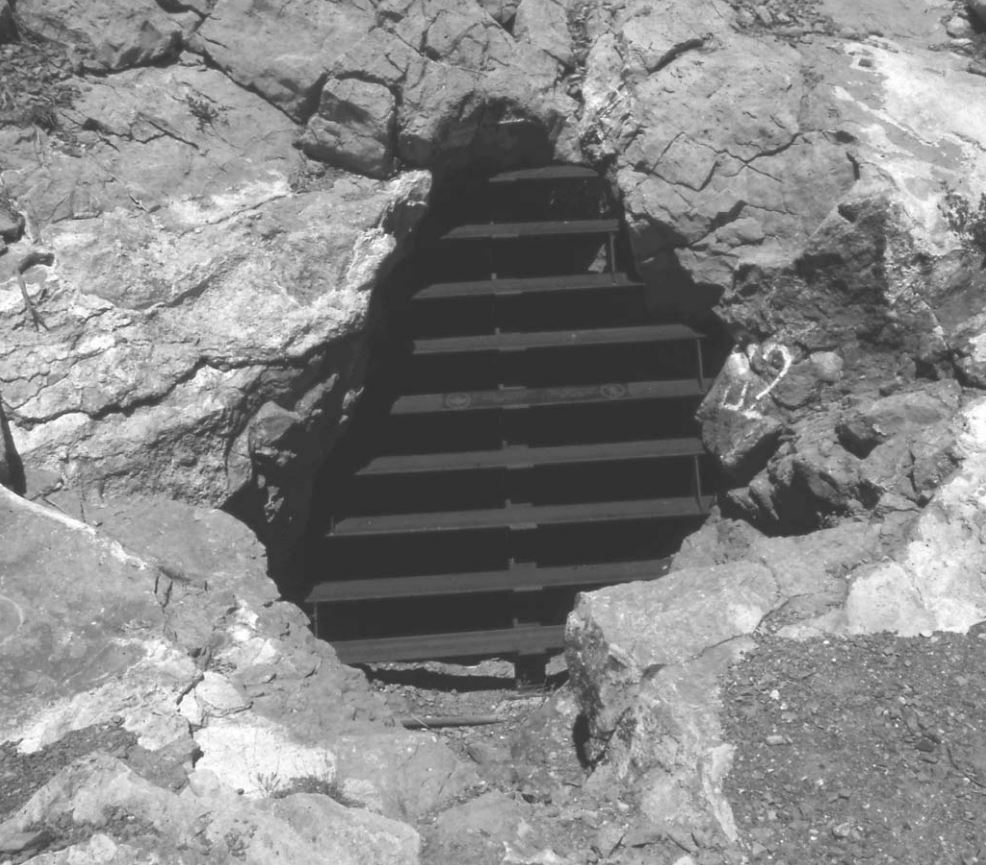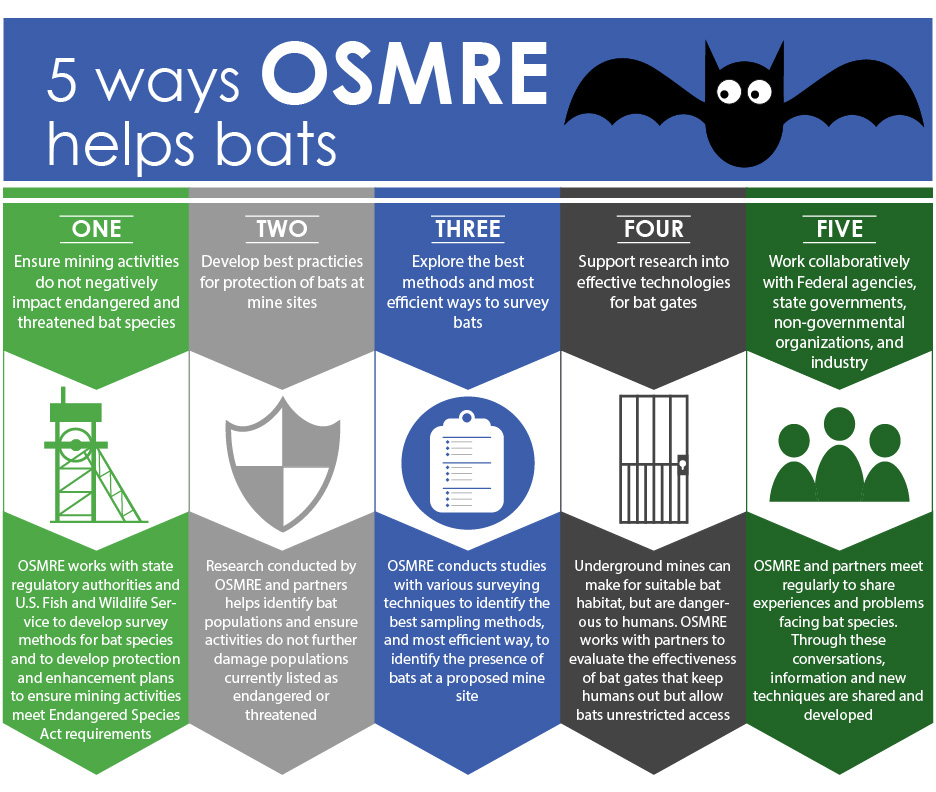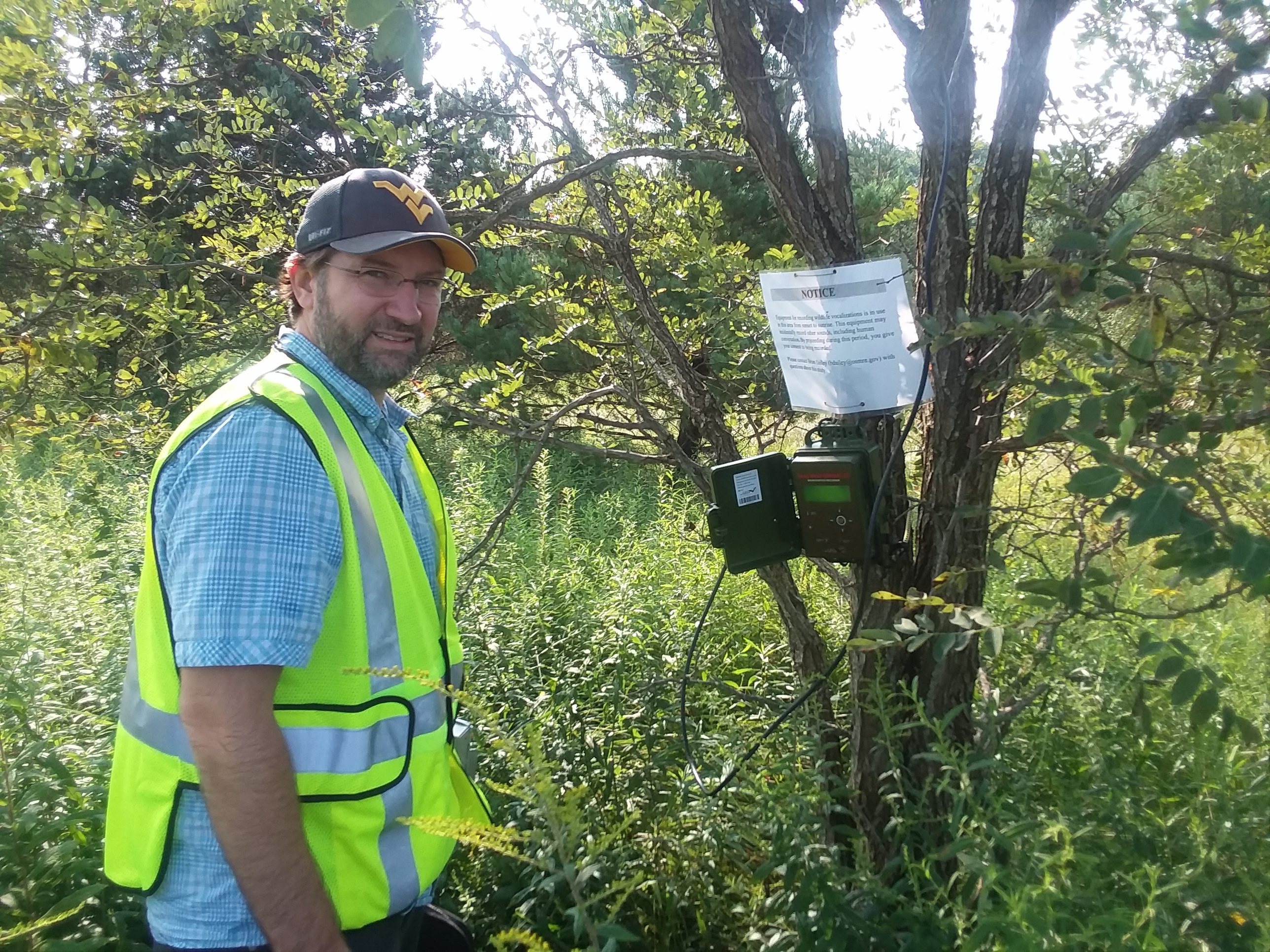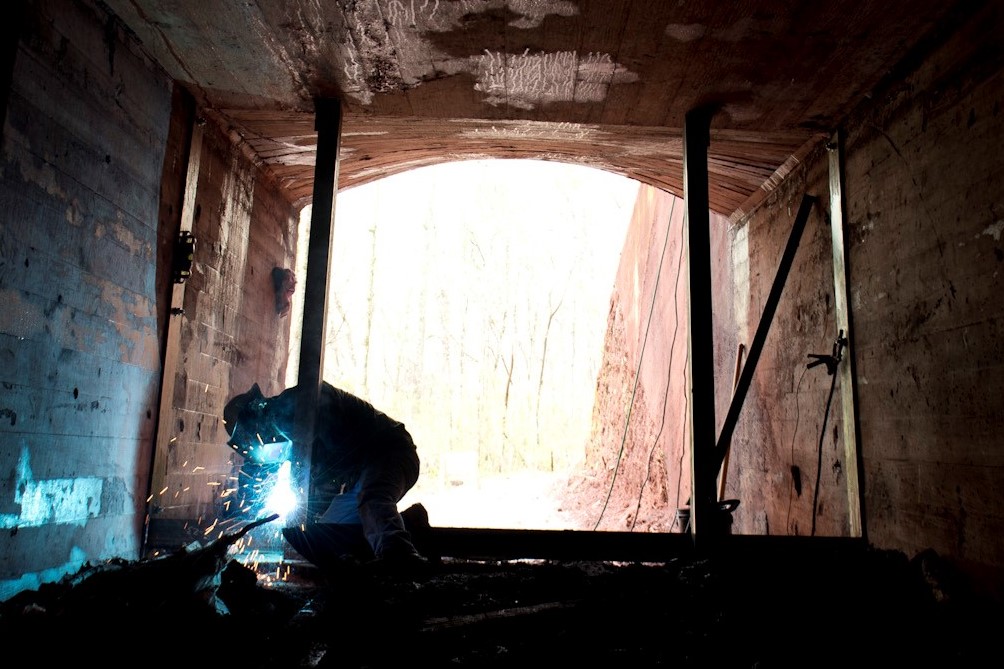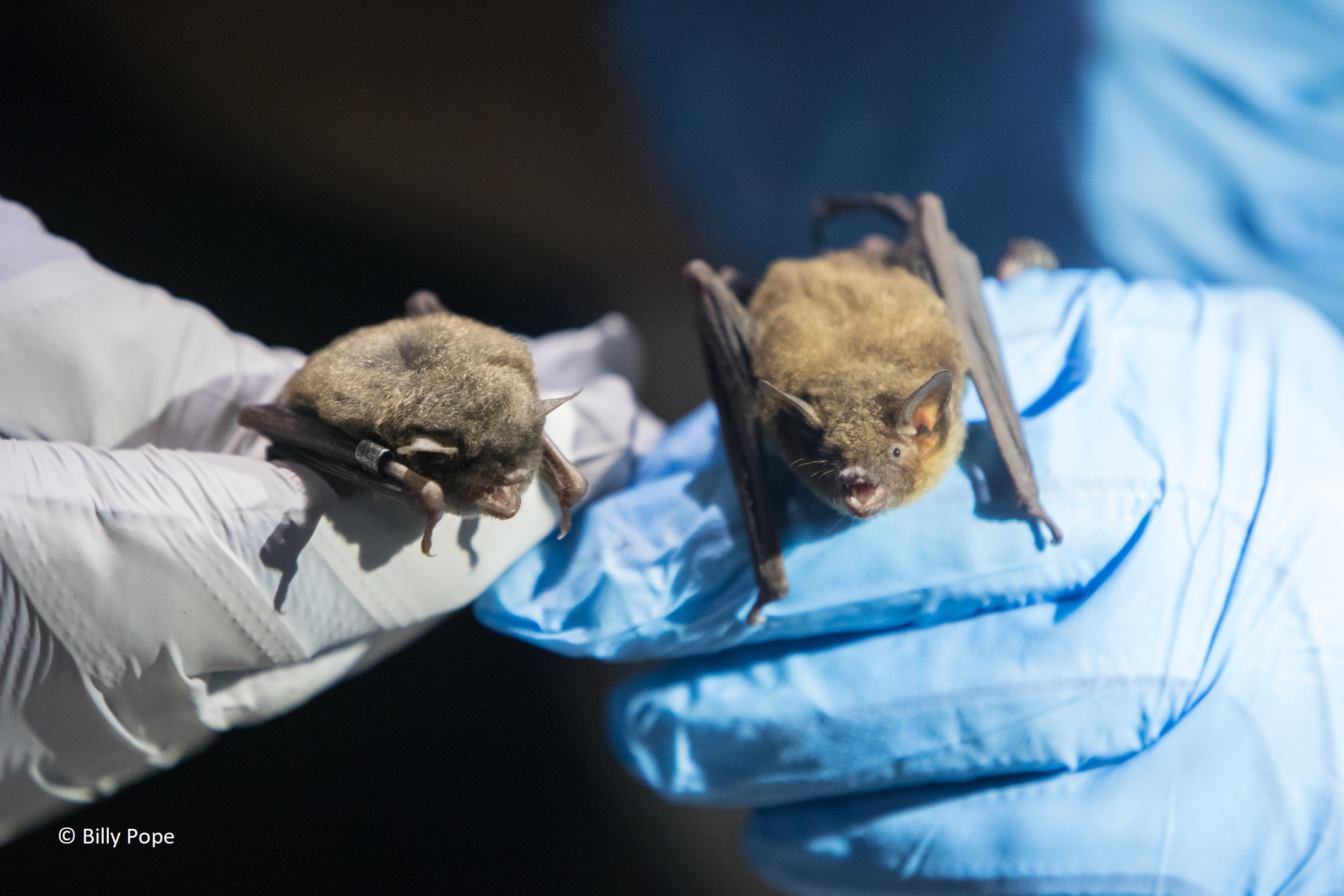Bat Conservation and Mining
Bats provide critical ecosystem services to humans, including eating insect pests, pollinating plants, and dispersing seeds. Bats are also important to maintaining healthy ecosystems because bats are considered indicators of ecosystem health because of their longevity and their sensitivity to environmental changes that may affect many other organisms.
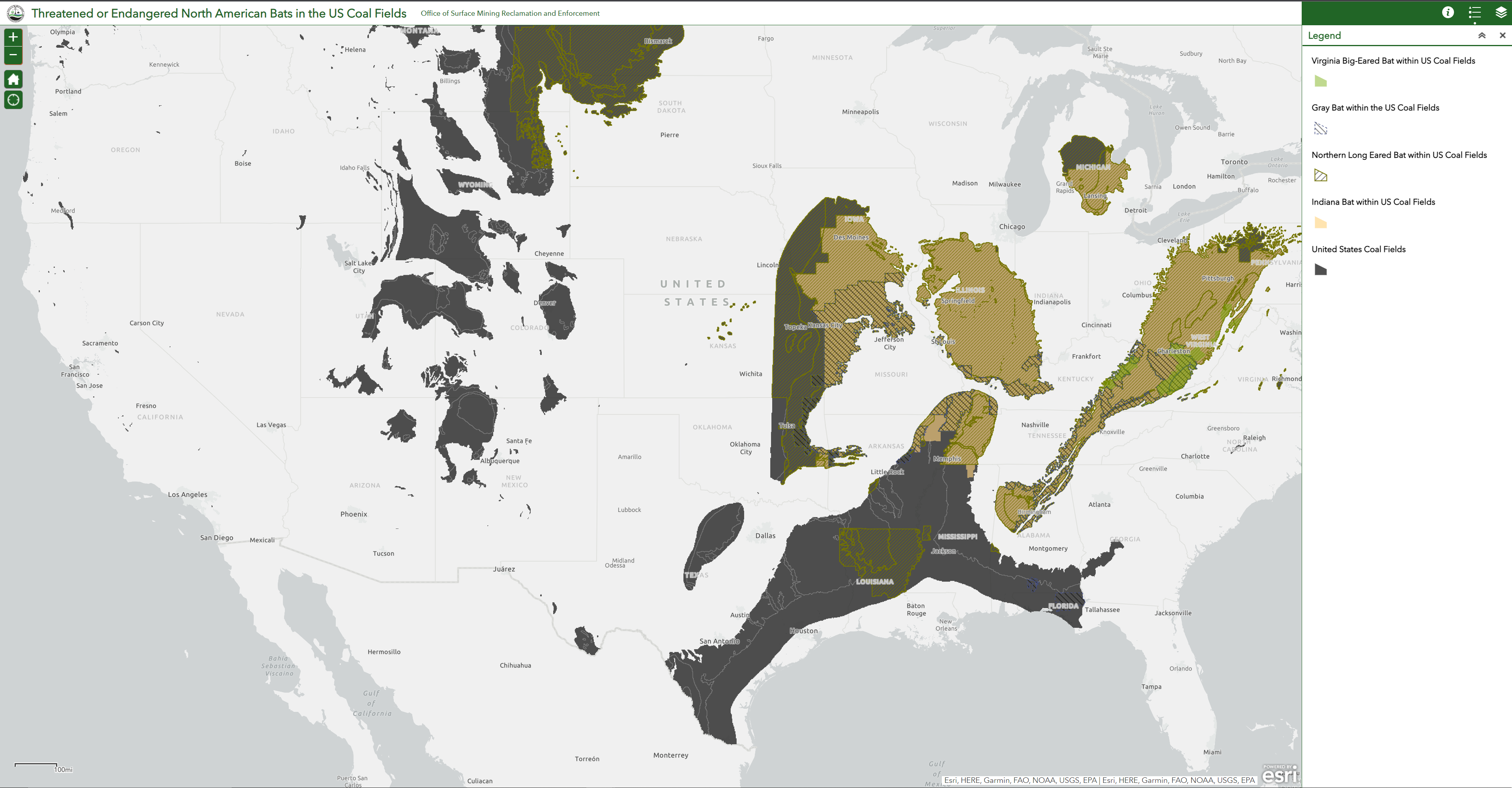
Map showing the range of four bat species across U.S. coal fields.
White-nose syndrome, caused by the fungus Pseudogymnoascus destructans (Pd), has unfortunately resulted in a significant decline in bat species across the United States, including in states with current mining activities.
Four bat species protected under the Endangered Species Act may be potentially encountered at mine sites:
- Virginia big-eared bat.
- Indiana bat.
- Northern long-eared bat.
- Gray bat.
To ensure the protection of endangered and threatened bat species, OSMRE works closely with our state regulatory agency partners and the U.S. Fish and Wildlife Service to ensure mining activities do not negatively impact federally listed bats that are present at a mine site. Through this work, and partnerships with other Federal and State agencies, OSMRE helps develop guidelines and best practices for protecting threatened and endangered bats on mine lands.
Explore the interactive map of the U.S. coal fields and species ranges for the Virginia big-eared, Indiana, northern long-eared, and gray bats.
OSMRE Helps Bats
In addition to working with state regulatory agencies, OSMRE protects bats in a number of ways:
Ensure mining activities do not negatively impact endangered and threatened bat species
OSMRE works with state regulatory authorities and U.S. Fish and Wildlife Service to develop survey methods for bat species and to develop protection and enhancement plans to ensure mining activities meet Endangered Species Act requirements.
Develop best practices for protection of bats at mine sites
Research conducted by OSMRE and partners helps identify bat populations and ensure activities do not further damage populations currently listed as endangered or threatened.
Explore the best methods and most efficient ways to survey bats
OSMRE conducts studies with various surveying techniques to identify the best sampling methods, and most efficient way, to identify the presence of bats at a proposed mine site.
Support research into effective technologies for bat gates
Underground mines can make for suitable bat habitat, but are dangerous to humans. OSMRE works with partners to evaluate the effectiveness of bat gates that keep humans out but allow bats unrestricted access.
Work collaboratively with Federal agencies, State governments, non-governmental organizations, and industry
OSMRE and partners meet regularly to share experiences and problems facing bat species. Through these conversations, information and new techniques are shared and developed.
Bat Conservation and Mining Steering Committee
OSMRE chairs the multi-agency group Protecting Bats at Coal Mines. This group is composed of Federal, State, and private stakeholders and provides a means for discussion of current topics and issues involving bat conservation. For more information, contact the committee chair: Brian Dailey at [email protected].
Latest Information
For the latest information on threatened and endangered bats, including summer survey guidance and development of protection and enhancement plans, visit the U.S. Fish and Wildlife Endangered Species webpage.
Case Studies
In the summer of 2018, OSMRE began a bat study at the Flight 93 National Memorial. The purpose of this study is to evaluate bat activity and the efficacy of a low cost bat acoustic monitoring device at two different habitat types:
OSMRE staff set up acoustic monitoring devices at four locations within the Flight 93 National Memorial Grounds to detect bat activity in July and August. Data from this study may be used to inform further OSMRE research into bat activity around active, reclaimed, and abandoned mine lands.
In 2017, the Alabama Department of Labor, Abandoned Mine Land Program completed work to close a mine opening in the Birmingham, AL area. Due to the presence of bats in the area, the mine was closed using a specialized bat gate, which allows bats free access to the mine caves, while keeping humans out. A 2017 survey conducted of the mine identified one of the largest hibernacula colonies of tri-colored bats observed in the greater Birmingham area.
Since Alabama AML closed the mine with a bat gate, the area is now a suitable location for testing experimental treatments for white-nose syndrome as access to the mine can now be controlled and only allowed for survey/research purposes.
The overall goal of the research is to test 3 Pseudogymnoascus destructans (Pd) treatment options in the mine. The mine is 1 of 3 sites for this environmental testing, along with one site in Arkansas and one site in Ontario (Canada). Research will be conducted by Bat Conservation International (BCI) through a National Fish and Wildlife Foundation grant.
Researchers will begin by collecting 20 swabs of the mine walls potentially where Pd should exist. The research team will use the results of these preliminary data to set up treatment locations. Once treatment locations are identified, the BCI team will construct "exclosures" that will prevent bats from re-contaminating the treatment area during the study. Researchers will be taking samples and treating them with 1) UV light, 2) Polyethylene Glycol (PEG), and 3) Isopropyl alcohol (decon agent) of at least 40, 20cm treatment zones within about 50 feet of the mine tunnel walls within the exclosure site. Over the following months, the research team will continue to collect samples of the treatment zone.
While the research is not being conducted by the Alabama AML program or OSMRE these types of experiments would not be possible had the opening not been secured with a bat gate through the AML program.
In the late 1800s mining left over 150 dangerous shafts, adits, prospects, and stope openings on Mine Hill near the southern New Mexico ghost town of Chance City. Closures included concrete caps, poly plugs, backfilling with rock, blasting, installation of steel bat grates with locking access doors, and cable nets. Because of the historical significance of the timber head frames, steel closures were constructed to fit around the timber posts.
Today, people who visit the site to explore the ghost town and mine sites can do so without fear of falling into an open abandoned mine void. In addition, important bat habitat has been preserved and the reduction in disturbance by curious visitors should lead to an increase in the bat population inhabiting the mine workings.
